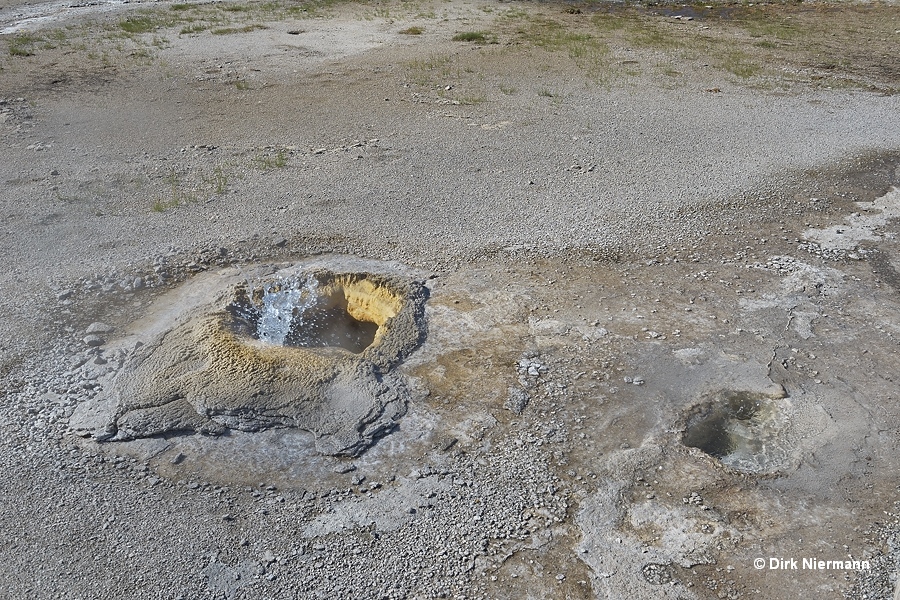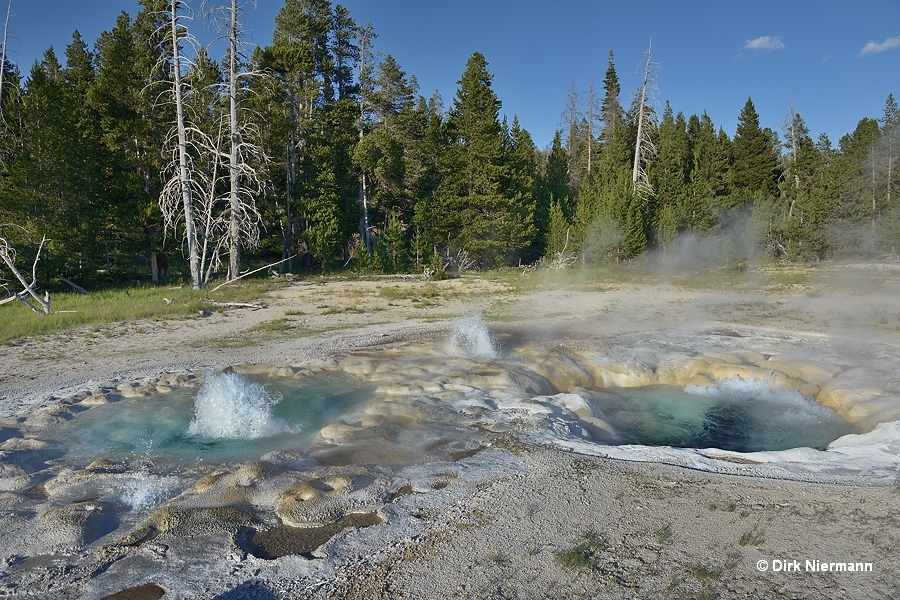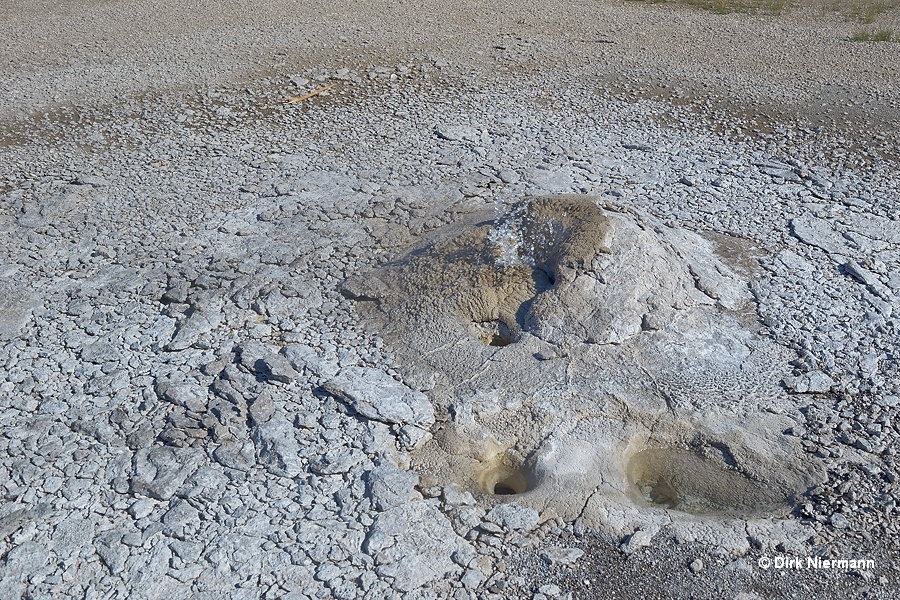Upper Geyser Basin, Sawmill Group
Page 1 2
After leaving Geyser Hill to the northwest you soon reach the Sawmill Group. Interestingly, some of the geysers of this group show a close relationship concerning their activity. In the so-called "Sawmill mode" Sawmill Geyser, Tardy Geyser, and Spasmodic Geyser are active. Much rarer is the "Penta-Churn mode", when Sawmill Geyser is inactive and the long lasting play of Tardy and Spasmodic Geysers is sometimes followed by Penta and Churn Geysers.
Coming from Geyser Hill, you first encounter the intermittent spring UNNG-CGG-6 on the lefthand side the boardwalk.

Directly on the opposite side of the boardwalk Rubber Pool shows up. The quiet pool has been named after the rubber-like consistency of its bacteria-populated walls.

Liberty Pool, at a short distance farther west, stays at even lower temperatures than Rubber Pool.

Next, with the frequently playing Tardy Geyser we meet the first member of the "Sawmill Geyser Complex". It's capable of spouting 6 m (20 feet) high, but most eruptions are much smaller. The name probably refers to its delayed onset with respect to Sawmill Geyser's play.

Sawmill Geyser is the largest member of the group. In "Sawmill mode" it is active about one-third of the time, playing up to 10 m (33 feet) height. The vent opens into a funnel whose shape often sets the ejected water into rotation. The spinning water column may have been the reason for calling it Sawmill Geyser. Moreover, there is another noteworthiness: The observation of three eruption modes with different heights and durations hints that the plumbing system can contribute as a whole or in distinct parts to an eruption.

Except for the second half of the year 1967, Sawmill Geyser has proven to be a very reliable performer. All the bigger was the surprise in January 2017, when Sawmill ceased all activity. Just a little later also Old Tardy Geyser (see below) entered dormancy, while Tardy Geyser reduced the number of its eruptions dramatically. To complete this confusing picture, the "Penta-Churn mode" failed to take over, all related geysers stayed quiet. With little changes this situation continued until June 24th, 2021, when Sawmill resumed its regular play. The reasons for this anomaly are still unknown in detail, however, it is common knowledge that in the short or long term geysers are parts of dynamic hydrothermal systems.

The inconspicuous vent of Uncertain Geyser is embedded in the south rim of Sawmill's geyserite lining. It is much less active than Sawmill itself and it seems that a deep drain of Sawmill triggers its up to 4 m (13 feet) high eruptions. Uncertain Geyser anticipated the current dormancy of Sawmill Geyser by ceasing its activity already towards the end of 2016.

At Sawmill the boardwalk branches into three directions. Following the loop trail to the right (east) counterclockwise, Twilight Spring can be observed at some distance on the righthand side. Its activity varies between overflowing, splashing and rare, small eruptions.

Between Twilight Spring and the next large feature to the east, Spasmodic Geyser, the frequently active Thumping Hole Geyser lies close to the boardwalk. Usually it plays around 60 cm (2 feet) high. The clear pool with two vents next to it is called Dog Bone Spring.

The already mentioned Spasmodic Geyser is probably the most often playing geyser of the Sawmill Group. Bursts from the largest of the twenty or more vents may reach up to 3 m (10 feet) height.

In the grazing light of the late evening sun, the large number of small vents stand out clearly, in particular in the case of a deep drain of Spasmodic Geyser.

Across the boardwalk from Spasmodic Geyser the cone of Penta Geyser really shows five openings. When the Sawmill Complex is in "Penta-Churn mode", it may jet water up to 7 m (25 feet) high.

Penta Geyser's northwestern neighbor is Oval Spring. Its three vents are independent geysers, one of them even capable of eruptions up to 6 m (20 feet) high. Geyser activity is quite rare, though.

In July 2024 we observed a few small eruptions after Oval Spring had refilled from a somewhat deeper drain. In the drained state there was still some water present in the vents of the pool, however, I took no photo thereof.

Page 1 2